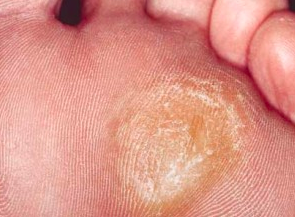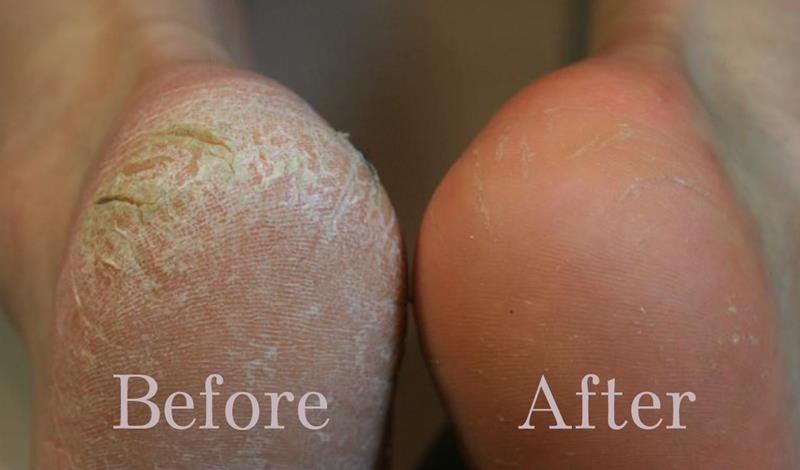
A callus is a hardened and thickened area of dead skin that often develops around the heel, ball of the foot and/or the toes. Callus has a rubbery feel to it and may appear a pale yellow colour, though if the skin is dry, can feel very hard, have a white appearance and may even develop cracks. Callus can vary greatly in size and may span your entire heel, or just a coin-size patch on the side of your toe. As callus is formed from dead skin cells and areas of callus contain no nerve endings, meaning they have no feeling. Any sensations you experience when touching a callus are from the healthy underlying skin.
Developing callus is actually a response to either repeated friction and excess pressure. By developing thicker and firmer skin in a high-impact area, your body is protecting itself from further damage like skin breaks which would otherwise leave you vulnerable to infection. Hence, callus often doesn’t cause any problems or pain. Some examples of causes include:

When a callus grows too thick, however, it can put excess pressure on the healthy skin beneath and cause irritation, tenderness and difficulty comfortably wearing shoes.
While many won’t need to seek treatment for their callus, treatment is indicated when the skin beneath the callus becomes painful, uncomfortable, or limits your ability to comfortably wear shoes or carry out activities. If you have diabetes or any conditions that impact your ability to feel, it is also very important that you keep your callus well managed as the dead skin means your sensation is diminished further. As highly-skilled podiatrists, we are able to safely, effectively and painlessly remove the bulk of the callus in the clinic, during your appointment. A small layer should be left intact to continue to protect your skin as per its original intent. Under no circumstances should you try to cut the callus off by yourself using sharp instruments. Improper techniques can damage the healthy surrounding skin, resulting in cuts and infection. If callus is an ongoing issue for your feet, we’ll conduct an assessment to determine the cause(s) of the callus and advise you on how to reduce the onset of callus formation in the future.

We’ve all had those days — you come home after hours on your feet, kick off your shoes, and notice your ankles look puffier than usual.
Swelling in the feet, ankles, or legs (known medically as edema) isn’t always a reason to panic. It can be as simple as a
salty lunch or a long flight.
But what if it’s happening more often — or seems to be getting worse? Swelling can sometimes be a sign of something more serious. Here’s
what could be going on and when to check in with your doctor.
.jpg)
Every year on October 8th, the world celebrates International Podiatry Day - a day dedicated to
raising awareness about foot health and the vital role that podiatrists play in our overall well-being.

There’s been a lot of buzz about going barefoot. Some say it helps strengthen feet and improves performance, while others warn it can do more harm than good. The truth? It depends on the person, the surface, and how it’s done.
Keeping your family on their feet and helping them to walk, run, play and exceed their goals is why we love getting up in the morning.
Ground Floor, One Health Building
122 Remuera Rd, Remuera
Auckland 1050, New Zealand
| MON - FRI | 7:30am – 6:30pm |
| SAT | 8:30am – 4:30pm |
| SUN | Some availability |
Make an Appointment
Online Schedule
Our virtual receptionist is available 24/7 to help with general questions, booking requests, and clinic information, even when our team is busy, or it's after hours.
Whether you're calling us or using our website, you'll get fast assistance any time of day. And if your query needs a personal touch, a member of our team will follow up as soon as possible.
If you’d like to see a podiatrist who speaks your preferred language, just give us a call and we’ll help you book.